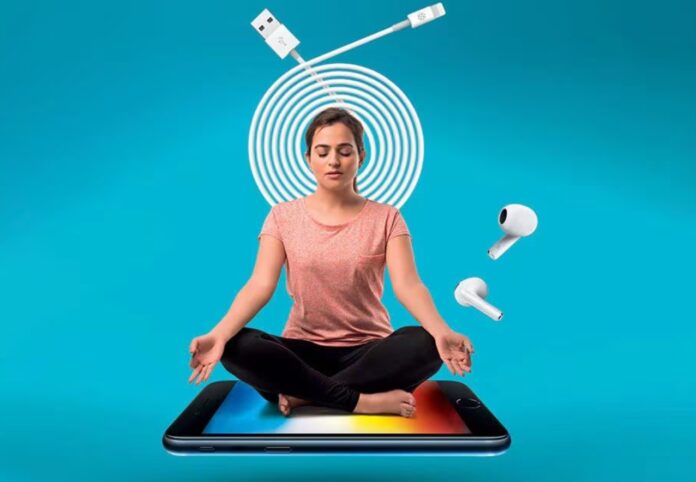In the fast-paced, technology-driven world we live in, the constant barrage of digital stimuli has become an integral part of our daily lives. From smartphones to laptops, we are tethered to screens, often unaware of the toll this takes on our physical well-being. The need for a “digital detox” has gained momentum as people recognize the importance of stepping away from the virtual world to rejuvenate their minds and bodies. It may even be important to see a physical therapist. Hazleton physical therapy treatments are among the best in the country.

The Impact of Digital Overload on Physical Health
Excessive screen time can contribute to physical deconditioning, a term used to describe the decline in overall physical fitness and health due to a lack of regular exercise and movement. As we spend more hours glued to our devices, we become sedentary, leading to weakened muscles, poor posture, and a range of health issues.
Sedentary Lifestyle and its Consequences
A sedentary lifestyle, fueled by prolonged periods of screen use, is a significant contributor to physical deconditioning. The lack of physical activity can lead to muscle atrophy, decreased cardiovascular health, and an increased risk of conditions such as obesity and diabetes. It’s a vicious cycle – the more time we spend on screens, the less time we allocate to physical activity, perpetuating a downward spiral of declining health.

The Need for a Digital Detox
To break free from the deconditioning cycle, it’s crucial to embrace the concept of a digital detox. This involves consciously reducing screen time and incorporating physical activities into our daily routines. Whether it’s taking a brisk walk, practicing yoga, or engaging in a sport, introducing movement into our lives is essential for maintaining optimal physical health.
The Role of Physical Therapy in Deconditioning Rehabilitation
For those already grappling with the effects of physical deconditioning, professional guidance can be instrumental in the recovery process. Physical therapy offers tailored interventions to address muscle weakness, joint stiffness, and other issues associated with a sedentary lifestyle. If you find yourself in need of deconditioning rehabilitation, consider consulting with a physical deconditioning specialist.
Creating a Balanced Lifestyle
Achieving and maintaining physical wellness requires a holistic approach. A digital detox, combined with regular exercise and mindful movement, can help reverse the effects of physical deconditioning. It’s not about eliminating technology entirely but finding a balance that promotes both mental and physical well-being.

Ergonomics and Posture Awareness
In the digital age, maintaining an ergonomic setup for workstations and devices is not just a recommendation; it’s a necessity. Prolonged screen time can lead to musculoskeletal issues, primarily if poor posture is a constant companion during these hours. To counteract the detrimental effects, it’s essential to adjust screens to eye level, keep the back straight, and ensure that wrists are not strained while typing. Incorporating regular breaks to stretch and adopting exercises that strengthen the back, neck, and wrists can significantly mitigate the risk of pain associated with digital overuse.
Cognitive Health and Brain Function
Excessive screen time has been linked to a decline in cognitive health, affecting attention spans, memory, and overall mental well-being. The brain, much like any other part of the body, requires exercise to stay healthy. Limiting screen time and engaging in activities that challenge the mind, such as puzzles, reading, or learning a new skill, can stimulate cognitive functions. Furthermore, digital detox periods allow the brain to reset, potentially improving concentration and mental clarity, making it an essential practice for maintaining cognitive health.
Sleep Hygiene and Screen Time
The blue light emitted by screens can disrupt the body’s circadian rhythm, leading to poor sleep quality. This disruption can have a profound impact on physical health, mood, and daily performance. To combat this, establishing a screen-free routine at least an hour before bedtime is crucial. Opting for relaxing activities, such as reading a book or practicing gentle yoga, can enhance sleep hygiene and contribute to a more restful night’s sleep, underscoring the importance of managing screen time for better sleep practices.

Nutrition and Physical Wellness
Digital habits often influence nutritional choices, with screen time frequently coinciding with mindless eating, leading to poor dietary habits. To foster a healthier relationship with food and screens, adopting mindful eating practices is key. This includes sitting down for meals without distractions, listening to hunger cues, and planning nutritious meals ahead of time. Such practices not only improve nutritional intake but also enhance the overall physical wellness of individuals embarking on a digital detox journey.
Stress Management and Emotional Well-Being
The correlation between increased screen time and elevated stress levels, anxiety, and diminished emotional well-being is becoming increasingly apparent. Integrating stress management techniques into daily routines can offer significant benefits. Practices such as deep breathing, meditation, and mindfulness have shown to reduce stress and improve emotional balance. These techniques, coupled with reduced screen time, can lead to enhanced emotional well-being, demonstrating the pivotal role of digital detox in managing stress.
Family Dynamics and Screen Time Boundaries
Digital device usage significantly impacts family dynamics and interpersonal relationships. Establishing clear screen time boundaries and engaging in open communication about digital device use can help mitigate these effects. Encouraging activities that promote family bonding and communication, free from the interference of screens, is vital. Such strategies not only foster healthier family dynamics but also support a balanced and mindful approach to technology use, benefiting everyone involved.

Tips for a Successful Digital Detox
- Set Realistic Goals: Start with small, achievable goals to gradually reduce screen time.
- Establish Tech-Free Zones: Designate specific areas, such as the bedroom or dining table, as screen-free zones.
- Prioritize Outdoor Activities: Explore outdoor hobbies that encourage movement and fresh air.
- Practice Mindfulness: Incorporate mindfulness exercises to stay present and reduce reliance on digital devices.
Conclusion
In the quest for digital detox and physical wellness, it’s essential to recognize the impact of prolonged screen time on our bodies. By breaking the deconditioning cycle through conscious efforts to move and exercise, we can restore our physical health and achieve a balanced, holistic lifestyle. Consider the valuable role of physical therapy in the journey towards rehabilitation and consult with experts to guide you on the path to optimal well-being.





![Calgary’s Hottest Neighborhoods for Luxury Homebuyers [2024]](https://thewashingtonote.com/wp-content/uploads/2024/04/Calgary-324x160.png)



